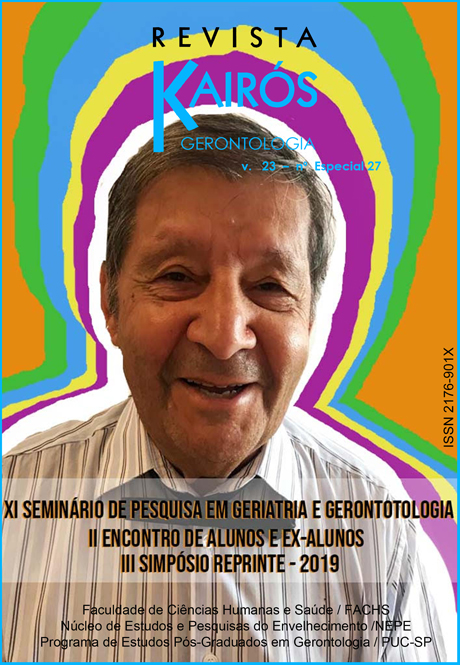Prevalência de sarcopenia avaliada pelos critérios EWGSOP1 e EWGSOP2 em idosos longevos comunitários
DOI:
https://doi.org/10.23925/2176-901X.2020v23i0p141-150Palavras-chave:
Idoso, Longevidade, Sarcopenia, Prevalência.Resumo
A sarcopenia foi inicialmente descrita como uma redução da massa muscular global, que ocorre ao longo do processo de envelhecimento. Algumas publicações têm demonstrado que a definição e a classificação da sarcopenia não estão totalmente estabelecidas, e a categorização dessa síndrome tem sofrido modificações, conforme observado nas publicações do Grupo Europeu de Trabalho sobre Sarcopenia em Pessoas Idosas [European Working Group on Sarcopenia in Older People (EWGSOP)]. Diante disso, o objetivo do estudo foi apresentar a prevalência da sarcopenia, utilizando as classificações propostas pelo EWGSOP1 e 2, em idosos longevos (> 80 anos) do Distrito Federal. Trata-se de um estudo transversal em que foram avaliadas as variáveis: sociodemográficas, massa muscular pela Absorciometria de Raios-X de Dupla Energia (DXA), força muscular pelo dinamômetro hidráulico e o desempenho físico por meio do teste de velocidade de marcha de 4,6 metros. Participaram do estudo 117 idosos com média de idade 83,7±3,51. A prevalência de sarcopenia foi de 3,5% e 4,3% pelos algoritmos EWGSOP1 e 2, respectivamente. Pelo EWGSOP1, 94% da amostra foi classificada como robusta; e 3,5% como sarcopênica. Pelo EWGSOP2, 50% foram classificados com provável sarcopenia; 43% como robustos; e 4,3% como sarcopênicos. Os resultados permitem verificar as divergências da prevalência da sarcopenia nos critérios adotados, principalmente entre a classificação de pré-sarcopenia e provável sarcopenia. Assim, nota-se a importância da continuidade de estudos que aprofundem a investigação dessas classificações, especialmente em idosos longevos.


